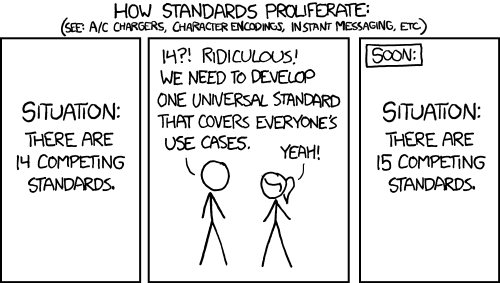
In unification intiatives, the devil is in the details.
The Hidden Depths of Vendor Lock-in
At first glance, CDP lock-in might seem like a standard vendor dependency issue. Just like AWS. In reality, it runs much deeper than most organizations realize. Your Data Architecture Becomes Theirs: Where with AWS you can move your Kubernetes workloads elsewhere, with CDPs they don’t just store your data, they fundamentally define how it’s structured, processed, and accessed. Once implemented, your entire reporting infrastructure and operational processes become dependent on their proprietary schemas and APIs. You’re not just using their tool; you’re adopting their worldview of how customer data should work. Operations Get Entangled: The integration web spreads quickly. Marketing automation connects to the CDP. Customer service pulls from it. Sales operations depend on it. What started as a data storage decision becomes the foundation of your entire customer-facing operation. Extricating yourself means rebuilding these fundamental business processes, not just migrating data. Knowledge Becomes Worthless: Your team develops deep expertise in vendor-specific tools and workflows. This institutional knowledge—often representing months or years of learning—becomes worthless if you need to switch. It’s an additional switching cost that compounds over time, making your team reluctant to even consider alternatives.The Pitfalls of “Your Own Data Warehouse”
The most common counterargument to CDP lock-in goes like this: “But you can store your data in your own data warehouse, so you maintain control.” This misses the fundamental issue entirely. Schema Control Is the Real Issue: Storing data in your data warehouse doesn’t mean you control the schema. The CDP vendor still dictates your data structure, and any changes you make can break your entire system. You cannot “just migrate” from one CDP to another this way (as if it was a Docker container on AWS)—proprietary schemas are by definition, non-standard (unlike Docker, for instance). Cost Shifting, Not Risk Reduction: This approach primarily shifts infrastructure costs to the customer while maintaining vendor control over data access patterns and processing logic. You’re paying for the warehouse and still locked into their schema. The Ownership Illusion: Your data warehouse is likely vendor-hosted anyway (AWS, GCP, Azure), so the “ownership” argument has limited merit. The real question isn’t where your data lives—it’s who controls how your data is structured and accessed.KISS: Keep It Simple, Stupid
Rather than accepting monolithic CDP risk or building everything in-house with open-source tools, companies should consider a balanced approach: maintaining schema ownership while leveraging best-in-class players. Here’s the key insights:
- Nowadays, basically every tool that requires user data has some sort of CDP-like features. These capabilities are inherently necessary for proper behavior—think of email tools, CRMs, support tools, product analytics platforms.
- After all, you will only need a handful of tools across the company to get the job done. If companies use too many SaaS tools, probably it’s more important to consolidate some of them instead.
- If you are keen about data quality, you are already familiar with the pattern, which essentially requires you to own your event schema (as we suggest), forfeiting one of the main benefits of a CDP, schema unification, in the first place.
- Moreover, some key CDP selling points are actually only required, and often included, in more specialized-tools:
- Identity Resolution is really only necessary for Attribution (your own
customer_idwill tie everything together elsewhere anyway)- Real-time personalization is the core feature of all Marketing Automation services, which are often included in your CRM.
Step 1: The Workflow Service Pattern
Most organizations already consume webhooks for core business operations (Stripe billing, Auth0 authentication, your own outbox, etc…). These aren’t optional, they’re essential for your application to function. But in doing this ordinary operation, you’re already building:- reliable webhook processing
- event validation
- schema mapping from external APIs to your internal models.
invoice.payment_succeeded to your internal billing.payment_received event, adding a mapping to Intercom’s API is a marginal effort.
With this approach, your event definitions live in your code. This gives you two massive benefits: your code simply cannot compile if it doesn’t respect the event schema (eliminating schema governance tools), and AI-assisted coding has full context of your data structures, which would otherwise be hidden in your CDP “Governance” layer.
Step 2: Specialists beat Generalists
Once you own your schema, you can route your strongly-typed events to the tools that do each job best:- Attribution: Use specialized vendors for attribution modeling and measurement. These tools focus on tracking, modeling, and optimizing the customer journey—typically leveraging advanced data science and analytics capabilities that generalist vendors bolt on as an afterthought.
- CRM and Marketing Automation: Employ separate vendors for AI-based engagement and customer communication. These platforms specialize in orchestration, messaging logic, and engagement strategies—not in attribution modeling.
- Support, Product Analytics, and More: Each domain gets the specialist treatment it deserves.